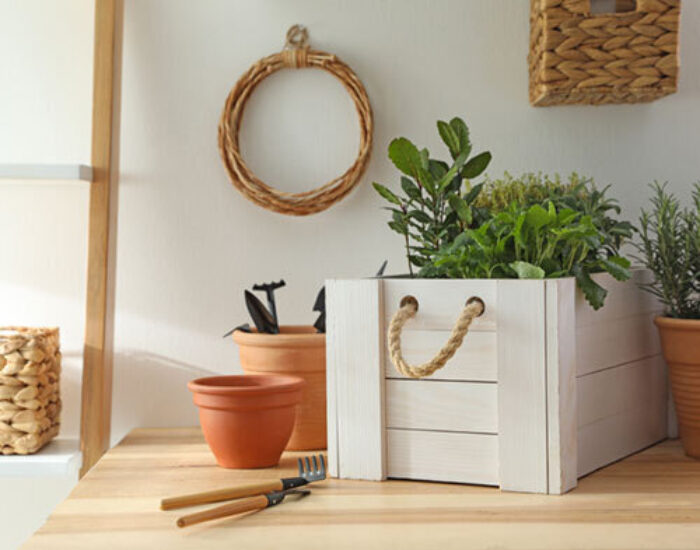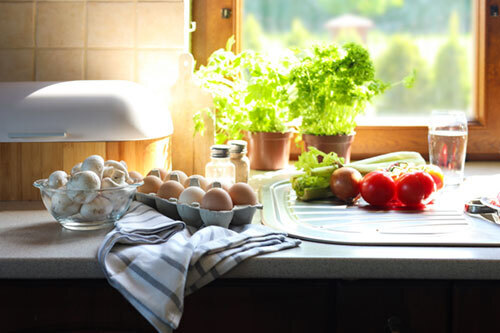October 19th, 2022
Tips for Growing Herbs Indoors in Winter

We’ve reached that time of year where we begin our final backyard cleanups and put our gardens to “bed” for the winter. However, it doesn’t have to mean the end of cooking with these fresh kitchen staples! This month we’ll cover valuable tips on how to successfully grow your own herbs indoors.
Picking the Right Pot and Soil
Terra cotta pots are a popular choice for indoor planting. Made from clay – a naturally porous material – this kind of planter allows excess moisture to evaporate from the soil faster and keeps dampness away from roots to spare them from rotting. If terra cotta isn’t your style, pick containers with ample drainage holes. The right size pot is also important. Select something to give your herbs just a few inches of growing room. Watering will become an issue if your selection is too big or too small. Regardless of the vessel you choose, find a mix specifically labeled as a potting soil so your plantings will thrive.
Before picking your favorite seeds or cuttings think about the placement inside your home. While it isn’t a difficult project to undertake, make sure you’re providing the essentials for successful plant growth. When considering location for your herbs, check for areas where cold drafts can flow through windows, or hot gusts from a furnace can interfere with plant viability.
Lighting
Whichever herbs you select, light is crucial to success. South facing windows provide the necessary sun, but skylights and other sunny exposure may offer adequate lighting, depending on the species. If you are overly concerned just add grow lights, which can be found at your local nursery or big box store. Mint, parsley and cilantro will get by with only four hours of sunlight, while others prefer 6-8 per day. Should you notice your plants appear to reach towards the window, showing lots of stem but few leaves, more sunlight than they are receiving is required.

Water
Getting to know your indoor garden’s water needs will take a little time to master, as most struggles with proper plant growth occur due to over-saturating. When you first start your herbs, keep dirt moist for the first few days until you see new greens. Once there’s growth, gauge the dampness by feeling the first inch of soil with your finger. Some sprouts do better in soil that dries out between watering, like rosemary, thyme, sage and oregano. Others like wet but not soggy conditions like mint, lemon balm, parsley and basil. Whatever the requirements, monitor for appropriate levels. When you find yourself watering more than 2-3 times per week, it’s likely time for a bigger pot. Certain plants want more dampness so buying a humidifier or plant mister may prove helpful. A slow release organic fertilizer is an excellent source of additional nutrients and could be utilized every six weeks.
Which Herbs Should You Grow?
These are the “sun worshipers”
- Thyme
- Sage
- Rosemary
Others prefer cool but moist conditions
- Cilantro
- Parsley
- Mint
Hardy and less fussy picks:
- Basil
- Chives
- Oregano
- Lavender
- Marjoram
Harvesting
If you notice your plants gaining height but not branching out, you can snip some of the tops off the plant to encourage fuller growth. Once your new plant begins to mature, you can enjoy multiple harvests from it by only using a third of the yield each time. This will improve the strength of the herb as well.
Remember to treat your indoor plants much like your outdoor garden. Some varieties need ample airflow around their leaves to prevent pest and fungus problems. But certain strains can be grouped in one place to create a greenhouse effect and do flourish nicely. Now harvest some herbs, and enjoy!




